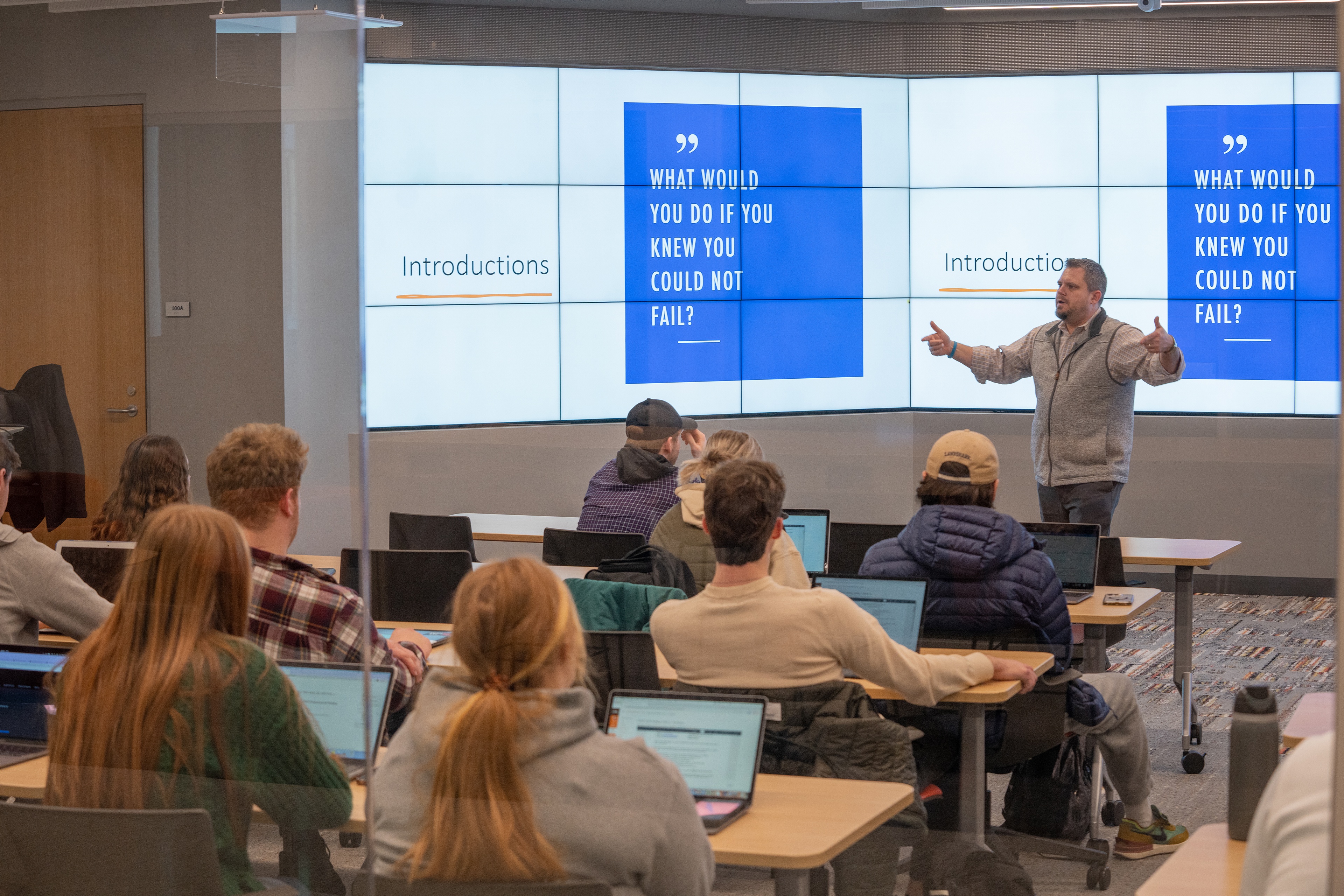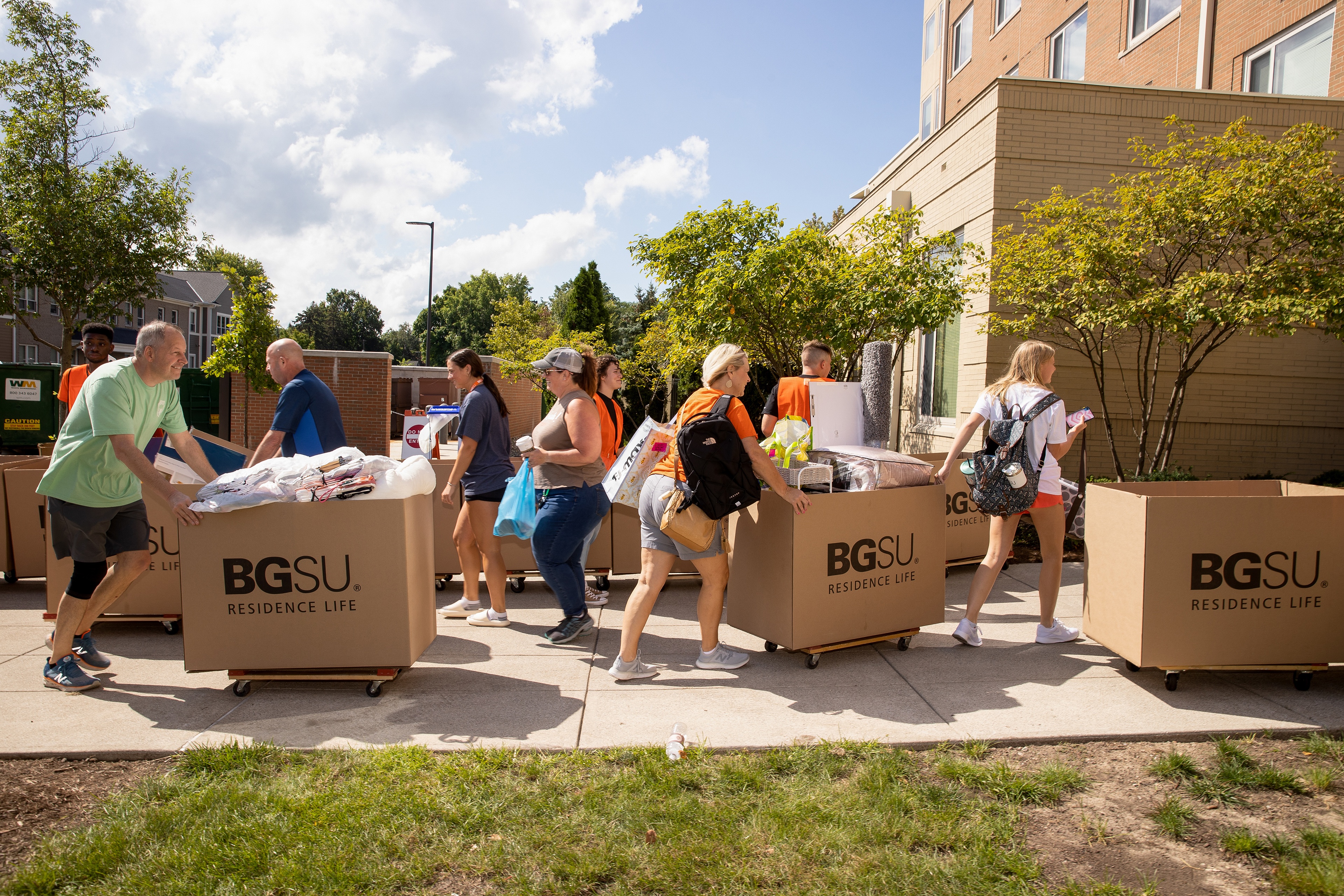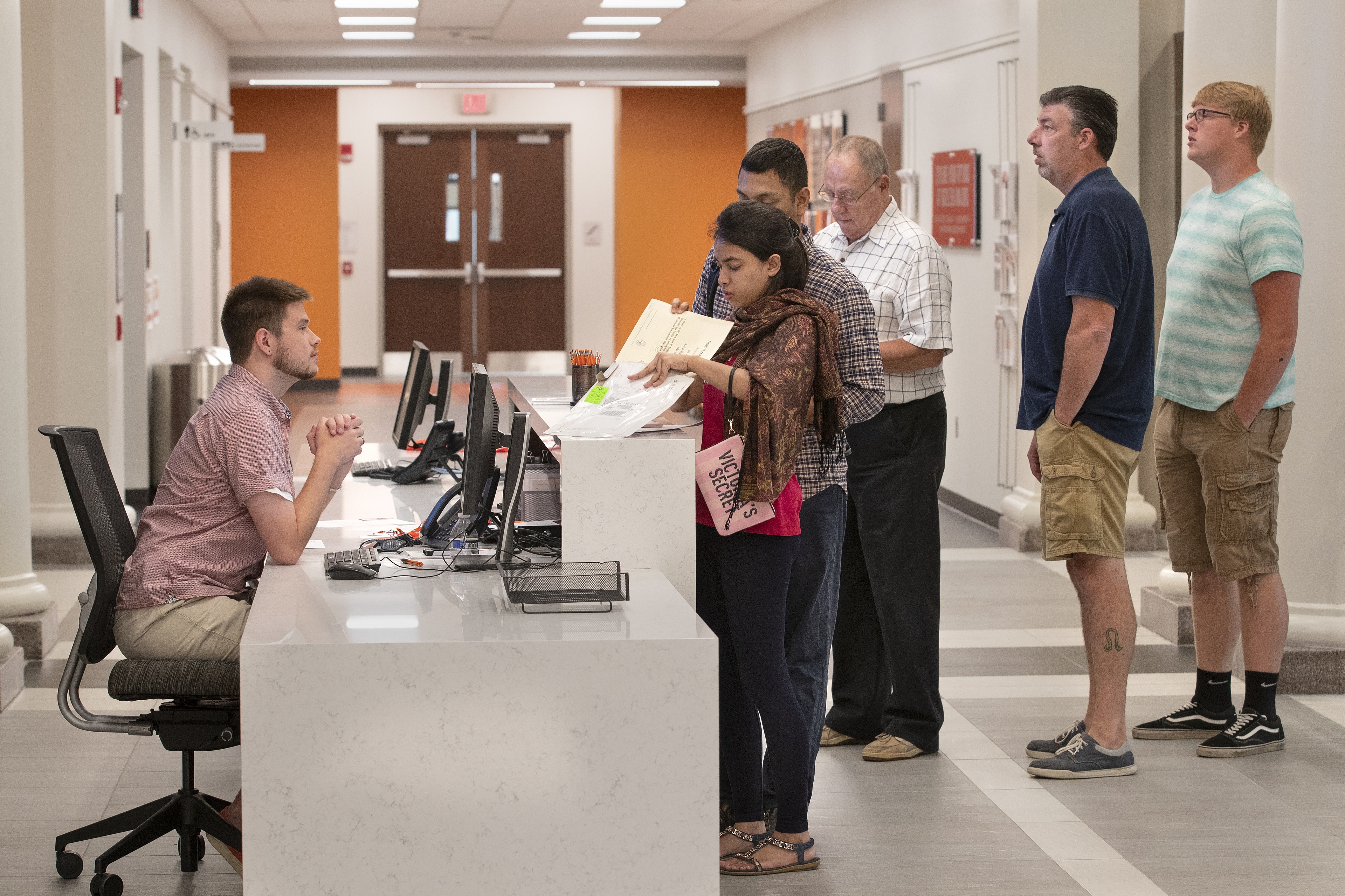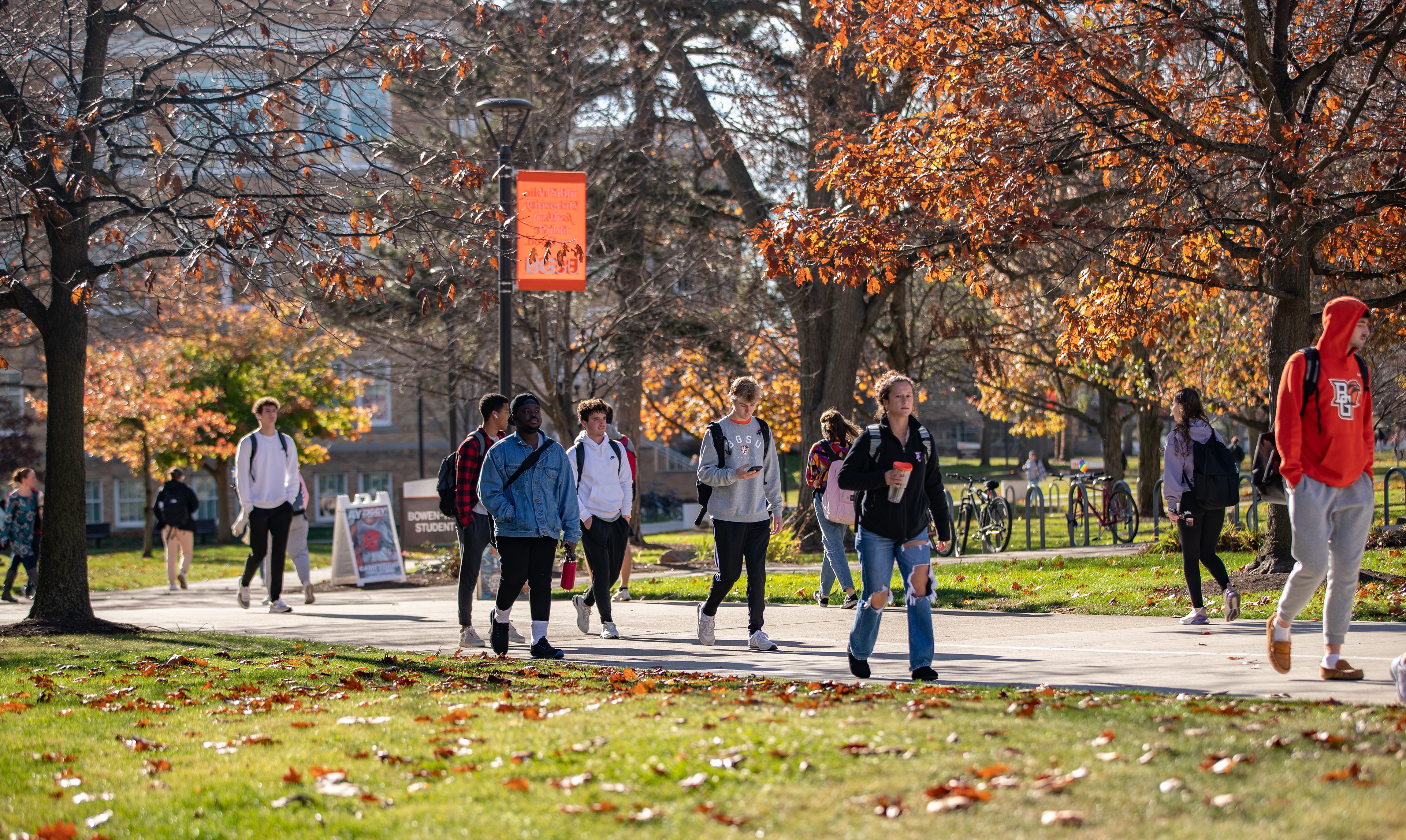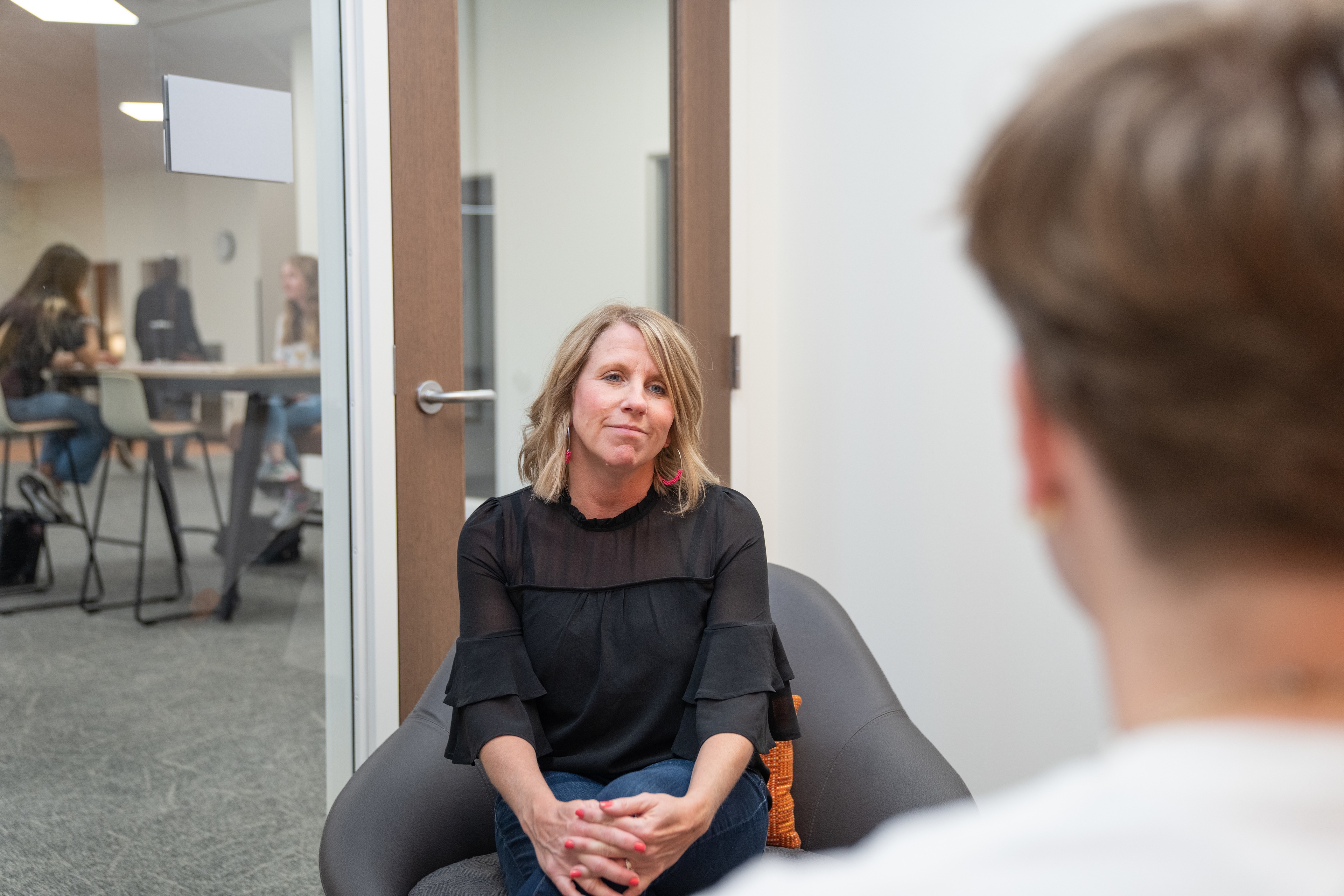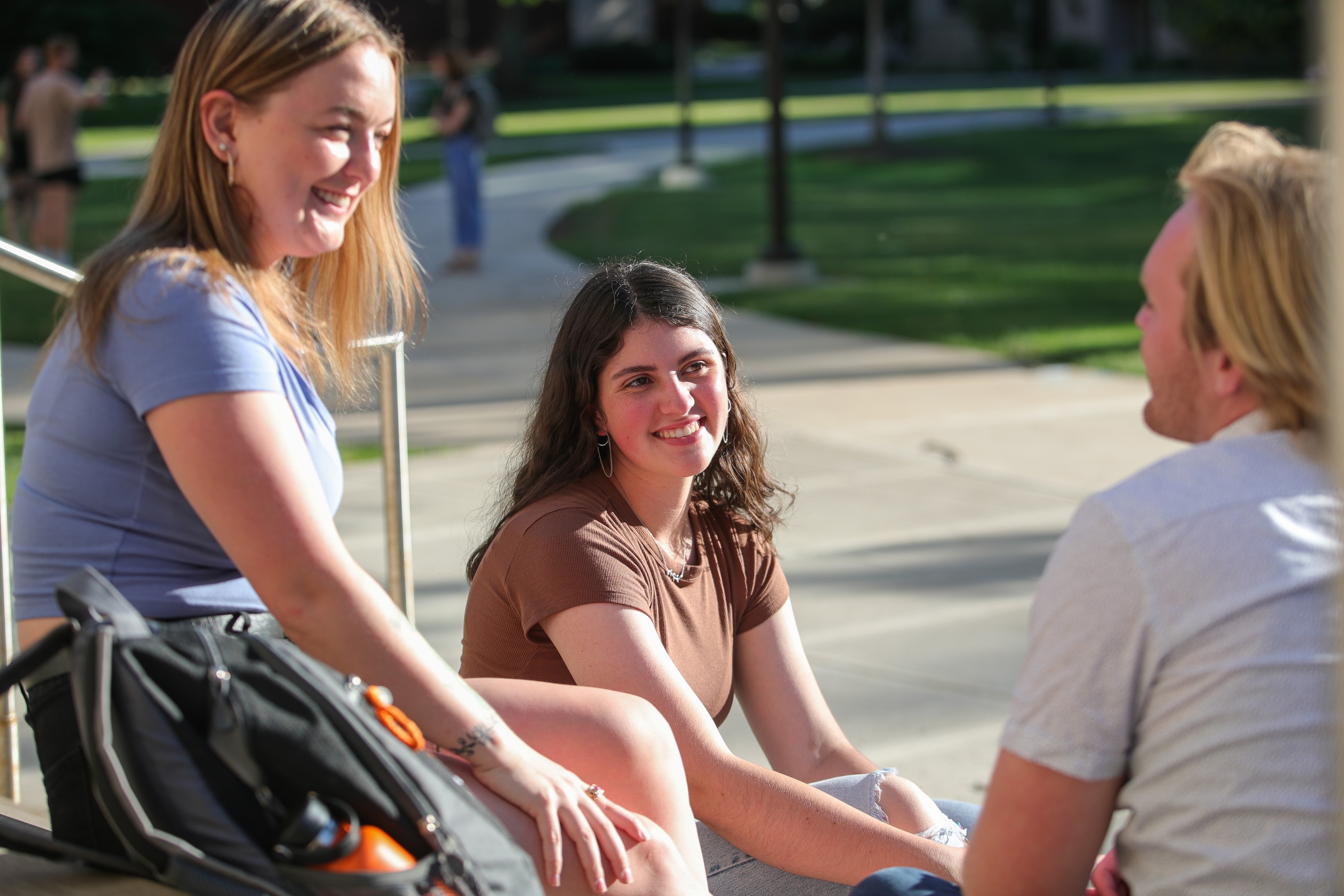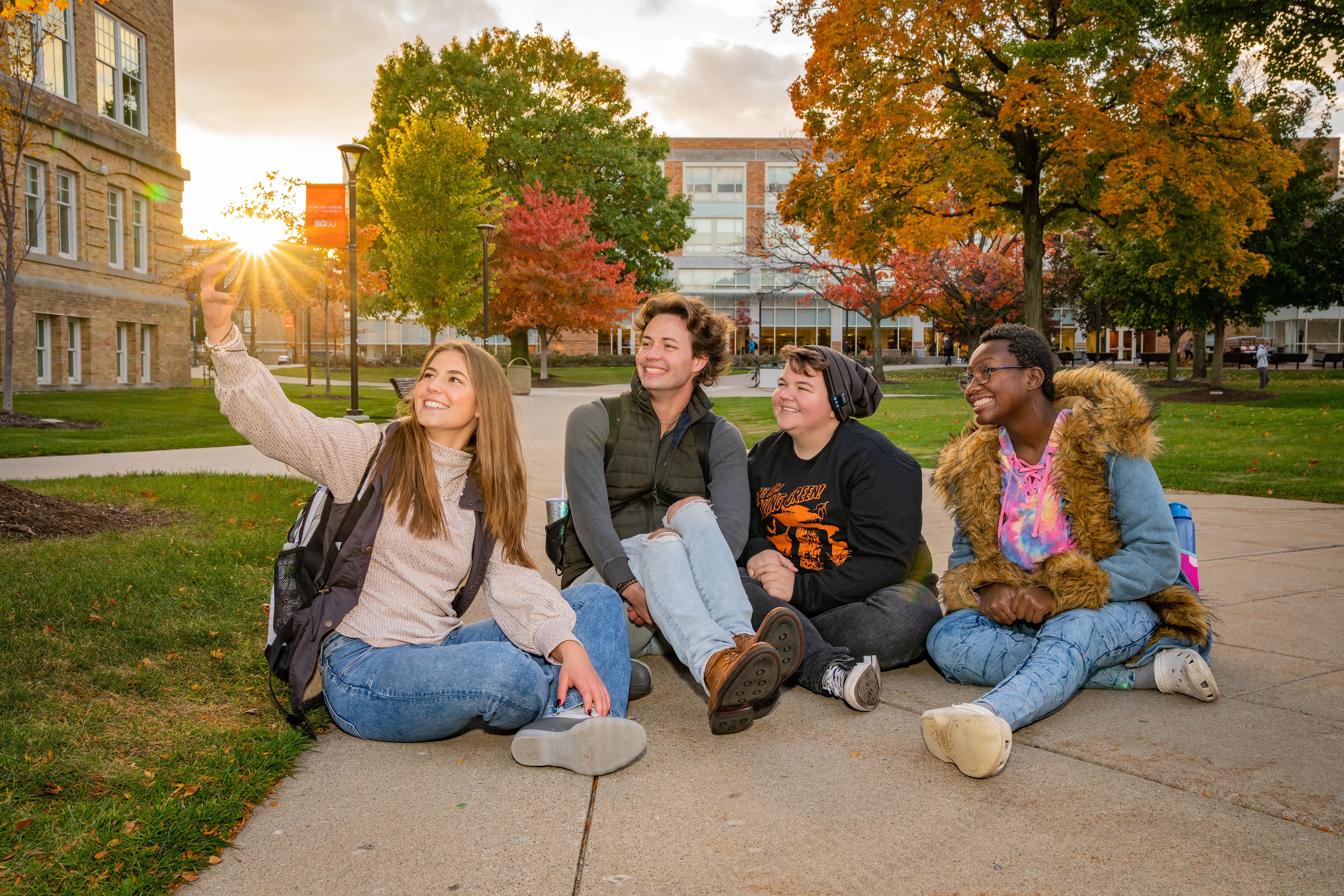

Empowering and Supporting Our People
Designing a
Community of Care
Story by: Laren Kowalczyk '07 | Design by: Josie Jonckheere '20 | Photos and video by: Craig J. Bell, Justin Camuso-Stall '14, Haven Conn '22
Amid a heightened awareness of the importance of mental health among college students nationwide, BGSU supports students with services and programming while removing barriers to care.
College is a remarkable period of growth and development, filled with incredible success and accomplishment for many.
Students are making decisions about their futures and taking steps toward achieving their dream careers. They’re learning new skills, forming relationships and getting a taste of what life is like in the real world.
But challenges can exist among those moments of excitement and newfound independence.
The adjustment of living away from home, the stress of managing hours of coursework with a demanding job or the disappointment of a failed exam can be too much sometimes.
And while feeling overwhelmed is nothing new for college students, there has been a steady rise during the last decade in the number of students at colleges and universities nationwide who report experiencing mental health challenges.
Bowling Green State University has consistently prioritized mental health and well-being as a core component of supporting student success. In recent years, the University has significantly expanded its programming while broadening access, opportunity and modality of services.
The Division of Health and Wellness plays a significant role in providing mental health services and well-being initiatives on campus through the Counseling Center and Wellness Connection with assistance from health educators, faculty, staff and students — each with a shared responsibility in contributing to a healthier BGSU community.
“We need to look at the whole person and the whole community and understand how each person plays a part,” said Ben Batey, chief health and wellness officer at BGSU. “To have healthy individuals, we need a healthy community.”
Comprehensive, campuswide support
Dr. Jessica Mitchell-Corsino, BGSU Counseling Center director, echoes that building a community of support is essential.
“At the Counseling Center, we talk about mental health as a campuswide problem, but it’s also a campuswide solution,” she said. “While we recognize that we are mental health experts, we think everyone plays a role in addressing mental health on our campus.”
To further support those efforts, BGSU recently engaged with The Jed Foundation (JED) to become a JED Campus, joining colleges and universities in Ohio and across the country committed to strengthening mental health services.
JED was created in 2000 to help destigmatize conversations around mental health and launch a blueprint for suicide prevention and is the nation’s leading nonprofit organization for young adult mental health.
During the four-year JED Campus program, the University will collaborate with a JED campus advisor to assess systems, programs and policies regarding student mental health, substance misuse and suicide prevention efforts.
A JED task force with personnel from various departments across the University will be formed to lead the charge, with plans to begin work in Fall 2023. Additionally, subcommittees will focus on targeted initiatives such as environmental scanning, risk management and promoting social connectedness.
BGSU will become a JED alumni campus after four years, equipped with new tools and resources to identify at-risk students, promote help-seeking behaviors and prevent suicide through life skills programs, among other crucial support services.
“JED reinforces the University’s commitment to creating a community of care,” Mitchell-Corsino said. “One of the goals of JED Campus is to ensure everyone is on the same page regarding mental health, so students receive a consistent message of support and are connected to proper resources regardless of who they’re in contact with.”
Along with consistency, Mitchell-Corsino said repetition is a necessity. The likelihood of a student seeking help increases with the frequency of messaging.
“If I go to class on my first day and see something about the Counseling Center in the syllabus, that’s one touch point,” she said. “Then, I’m walking to class and see a flyer posted in a building about a group session on destressing techniques. It reinforces our message of support and accessibility, and that’s essential for students facing mental health challenges.”
Identifying factors, removing barriers
Each year, the University collects data through surveys, focus groups and additional outreach to understand students' mental health, contributing factors and ways to help.
Batey said the percentage of BGSU students reporting anxiety, depression and loneliness has increased in recent years, which aligns with national trends among college student populations.
“This is a national trend and one we’re not immune to at BGSU,” he said. “There can be all sorts of challenges students face throughout college, and mental health will be weaved throughout all of them.
“We want to help students acknowledge their mental health and understand that when they stumble, there are support systems in place to help them get back on track.”
Batey said there are numerous contributing factors to the increased rates of mental health challenges among college students. However, social media is among the top causes, based on data from the national surveys the University conducts annually.
“While people are more technologically connected than ever before, we’re less socially connected in a way that’s meaningful for people,” he said. “There’s a deep sense of loneliness, which we’re trying to combat.”
But amid increased mental health struggles exists a ray of hope in the reduced stigma surrounding mental health, Batey said.
We’re seeing more young adults open to talking about mental health where in the past, people may not have been completely honest in responding to surveys based on that stigma,” he said. “To me, the fact that people are having conversations about it is a step in the right direction.
Even with mental health becoming less stigmatized among certain populations, Mitchell-Corsino said the Counseling Center is committed to reducing and completely removing barriers to care.
The center offers numerous drop-in support groups, both in person and virtually, for students who might find solace in a group setting or want to learn various coping skills. There is no referral or registration required for in-person events. Students are simply encouraged to attend at the scheduled times.
The Counseling Center hosts workshops on numerous topics, such as anxiety and stress management, designed to provide students with practical skills they can regularly use. Mitchell-Corsino said some events may require registration.
The University also implemented Let’s Talk, modeled after a program that began at Cornell University.
BGSU counselors provide confidential and informal 15-minute sessions at various locations on campus weekly. Although it’s not considered a substitute for therapy or urgent mental health concerns, Mitchell-Corsino said Let’s Talk counselors can listen to specific problems, help explore solutions and connect students to additional resources if needed.
"We’re taking more of our counselors out of the Counseling Center and putting them amongst the students,” Mitchell-Corsino said. “Again, it’s about removing that barrier and intimidation people can feel seeking help."
The Counseling Center also offers traditional services such as individual and group therapy, relationship counseling, alcohol and drug prevention services, crisis intervention and more. BGSU students can also access Thriving Campus, a comprehensive directory of therapists nationwide who work with college-aged students.
“I really want students to know that we are committed to connecting them to their best mental health resource,” Mitchell-Corsino said. “If that’s not us, that’s OK, but know we’re here to help.”
Promoting stress relief
Another facet of the University’s mission to support mental well-being is through programs designed to reduce stress and promote relaxation.
Throughout the year, the Wellness Connection provides yoga and meditation classes. There are workshops focused on teaching students mindfulness and destressing techniques.
Along with those more traditional programs, there are also late-night events, video game competitions and real-life Battleship in the Student Recreation Center pool — all designed to encourage participation by a broad audience.
Ashley Hartman ‘09, one of the University’s health educators focused on mental health, is a strong proponent of meeting students where they are and offering numerous touch points to wellness resources.
“If I can get a student in the door to play Mario Kart, then I can also have a conversation about how they’re doing and start to build that relationship,” Hartman said. “That could be a student’s initial touch point with our wellness programming, which then could spur them to attend a future program and so on.”
One of the most popular programs available through the Wellness Connection are the PAWS therapy dogs. Hartman said the PAWS team and therapy dogs interacted with about 5,000 people throughout the academic year.
The team holds events with academic departments, student organizations, residence halls and the Bowling Green Community to promote the positive impacts of animal therapy, including reduced stress and anxiety; decreased feelings of loneliness, pain and fatigue; and increased feelings of safety, among other benefits.
“There’s nothing better than being at a PAWS event and seeing people come around the corner and watching their face light up because they see a dog,” Hartman said. “The PAWS events are such a draw for our students, and their interactions with the therapy dogs are so beneficial for their mental health.”
Community of Care
One recurring theme woven throughout the University’s approach to mental health is shared responsibility.
The concept, reinforced through the Community of Care initiative, requires students, faculty and staff to act on situations that can significantly impact individuals and the campus community.
Developed during the pandemic in 2020, Batey said Community of Care is designed to create a support network for the entire BGSU community.
Resources and support for several issues that commonly affect college students, including alcohol and substance misuse and abuse; diversity and inclusion; hazing prevention and education; mental health and well-being; physical health and wellness; and sexual misconduct and Title IX are provided through Community of Care.
“There is always talk of personal responsibility,” Batey said. “You come to college and you’re expected to take care of yourself. We all have responsibility for our own well-being and physical and mental health. But in creating a community of care at BGSU, the idea is that we can also share in the responsibility for the safety and well-being of those we’re interacting with.
“The goal is to ensure that no one struggles alone.”
Editor's Note: Images in this article depicting counseling session scenes did not involve actual clients of the Counseling Center in order to preserve client confidentiality.
Updated: 05/25/2023 09:53AM

